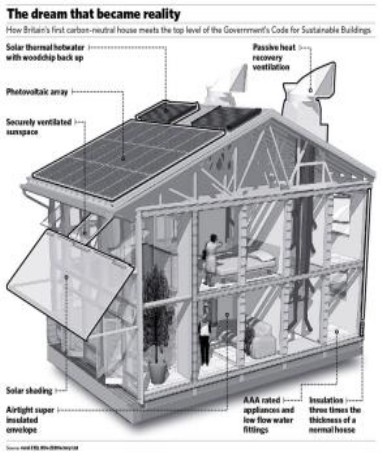Posts filed under ‘54’
Winner Of The Green Design Conference Competition Admits His Floor Lamp Design Was Flawed
The winning design of January’s Greener Gadget’s Conference’s Design Competition has been declared as not feasible by scientists. The design, the weight powered LED floorlamp by Clay Moulton, stirred up a controversy in the blogosphere. Moulton wrote a letter in which he declared that he’s going to have to do some more work on the lamp.
Moulton, who designed the lamp as part of his master’s thesis at the Virginia Tech university, wrote in reply to a highly critical article on PES Network that “If there’s any question as to the legitimacy of the competition now, I have offered to graciously concede the 2nd place win, as well as any winnings. My job now is to figure out a better design, plain and simple. I made an estimation based on feedback I got during the design process, and that estimation was shown to be incorrect.”

The debate that followed had been raging on for a while and finally last week, the organisers, InHabitat.com responded .On their website, they pledged continued support to Moulton; “We were surprised over all the commotion on the engineering feasibility of the lamp, since this was a conceptual design competition after all, and we never stated that designs had to be manufacturable or in production”, they wrote. They underline that the whole point of the design competition was to envision the future of greener gadgets. “We believe that Gravia is an amazing concept with a lot of potential, despite the design’s lack of accurate engineering specifications.”

Too bad that instead of directly dealing with the criticisms, the organisers simply opened the discussion; you can comment on the issue. If they had taken apart the criticisms they would have surely lent the competition the credibility it obviously lacks.
Zero Carbon House Kit Launched In The UK
The first zero carbon house was officially launched in the UK. Endearingly called the Rural Zed, it comes as a building kit that can be completed in three months. The house qualifies for level six of the government’s Code for Sustainable Homes.

Rural Zed looks sturdy most of all. To US eyes definitely not a dream house but to most Londoners and absolute scream. The house comes with photovoltaic solar panels and other thermal mass devices. The idea is that the house will be able to keep its inhabitants self sustained in the remotest areas and amid the worst weather conditions. The solar panels on the roof and the water heating panels under the floor can be powered by the national grid, but it’s only for emergencies. Mind you, those are likely never to happen; the roof panels heat a water system backed up in winter by a biomass boiler (fired by wood chips) and this is enough for six houses!
The high levels of in built thermal mass absorb heat and releases it ever so slowly. The walls come with about the best insulation you’ll ever have seen and there is also a heat exchanger in the ventilation system.
There’s a plug in for a wind turbine but you will have to buy such a power generator extra. When you look at the house itself, you will see that it has been cleverly constructed around a kind of ‘box’ of heavy timber. That maximises the energy and heat distribution. The house is meant to be affordable, but it’s rather pricey still at about £150,000. This is the casco situation only and it also does not include the price of land. However, this is cheaper than another virtually zero free housing project which amounted to £180,000. The house has been devised by Rapid Electronics, a supplier to the electrical contractors sector.
 Even though all all the national newspapers claim that the Rural Zed kit is the UK’s first zero carbon house, the Scottish have been touting their own zero carbon invention since 2007 (photo). It’s a project which aims to be financially self sustainable within three years.
Even though all all the national newspapers claim that the Rural Zed kit is the UK’s first zero carbon house, the Scottish have been touting their own zero carbon invention since 2007 (photo). It’s a project which aims to be financially self sustainable within three years.
The Scottish house is powered in a totally ecologically friendly way too through two on-site wind turbines which power up a Redox Fuel Cell system. What’s more, the turbines fuel an electric vehicle battery system!
To have this project become self sustaining as soon as possible the plan is to get a horticulture business going. The Scots hope the zero carbon house will be replicated and are providing training on site as well as real time monitoring of the system via the project’s website.






 My StumbleUpon Page
My StumbleUpon Page